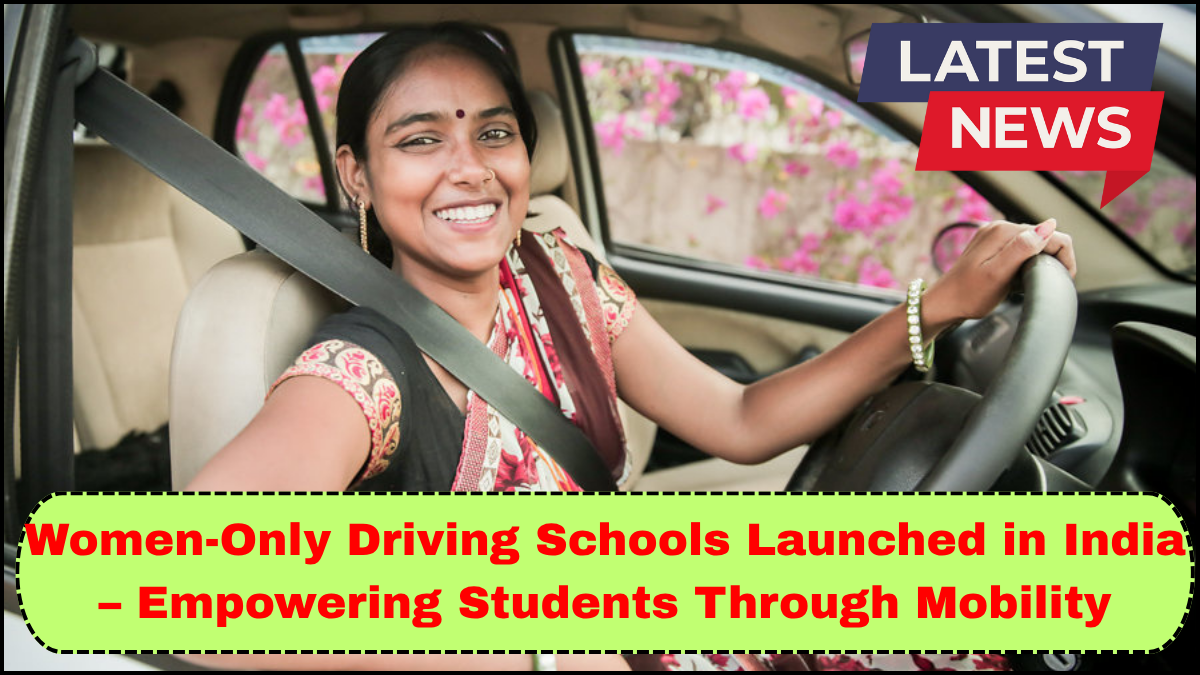In a major stride toward promoting gender equality and independence, the Government of India has rolled out the Women-only Driving School Scheme. This initiative is designed to break mobility barriers for women by providing a safe, inclusive, and empowering environment to learn driving. By offering free driving lessons under a structured framework, this female empowerment initiative is reshaping how women engage with public and private mobility across the country.

Why Women-Only Driving Schools Matter
India’s public spaces and transport systems have long posed safety and accessibility challenges for women. Dependence on male family members or public transport often limits women’s educational, social, and employment opportunities—especially in rural and semi-urban areas. Recognizing this, the government’s Women-only Driving School Scheme aims to address a deeper issue: autonomy.
Driving is more than a life skill—it’s a symbol of freedom. It allows women to take control of their time, decisions, and movement. In launching these exclusive schools, India is not just teaching women to drive; it is actively supporting their right to move freely and safely.
How the Scheme Works
Under the Women-only Driving School Scheme, select cities and districts have seen the establishment of government-supported institutions run entirely by and for women. These schools employ female instructors, support staff, and administrators, ensuring a comfort zone that encourages participation from all socio-economic backgrounds.
Some notable features include:
-
Free driving lessons for eligible women, especially those from economically weaker sections.
-
Access to certified training modules that meet national safety and licensing standards.
-
Provision of learner-friendly vehicles, many of which are adapted for beginners.
-
Priority admission for single mothers, domestic workers, and college-going students.
States like Maharashtra, Tamil Nadu, and Kerala have already seen a positive uptake, with hundreds of women enrolling in the first few weeks.
The Broader Impact on Female Empowerment
This female empowerment initiative goes beyond just driving. For many, it’s a gateway to jobs such as delivery partners, app-based drivers, and even commercial vehicle operators—roles previously dominated by men. It also opens the door for women to take up logistics and transport-based entrepreneurship.
Moreover, the scheme is being seen as a social equalizer. When women can move independently, their participation in the workforce rises. Young girls see role models in women who step into previously male-dominated spaces. The confidence gained from mastering a skill like driving can translate into other areas of life—education, career decisions, and even civic participation.
Addressing Cultural and Safety Concerns
Historically, societal norms in several parts of India discouraged women from learning to drive. Fear of harassment, judgment, or simply the lack of a female-friendly learning environment acted as barriers. These new schools directly counter that narrative.
By creating female-only spaces, the initiative not only addresses safety concerns but also nurtures a supportive atmosphere where women can learn without hesitation or fear. Instructors are trained not just in technical skills but also in soft skills—making the process encouraging and tailored to each learner’s pace.
Private Participation and CSR Support
Many private driving schools and auto manufacturers are now aligning with the scheme under their Corporate Social Responsibility (CSR) mandates. Brands like Maruti Suzuki and Tata Motors have partnered with NGOs to sponsor training for underprivileged women. This collaboration strengthens the program’s reach and sustainability.
In addition, partnerships with transport aggregators like Uber and Ola are providing job placement support to trained women, further extending the program’s impact.
FAQs
Q1: Who can apply for the Women-only Driving School Scheme?
Women aged 18 and above with a valid learner’s license can apply. Priority is given to those from economically weaker sections, students, and single mothers.
Q2: Are the driving lessons completely free?
Yes, under the scheme, the government covers the cost of training for eligible applicants. Some private institutions may offer subsidized packages for others.
Q3: Where are these schools currently operational?
The scheme has been launched in phases across several states, including Maharashtra, Delhi, Tamil Nadu, and West Bengal, with expansion planned in other regions.
Q4: Are the instructors also women?
Yes, all instructors and staff at these schools are female to ensure a supportive and secure learning environment.
Q5: Can graduates of the program find employment opportunities?
Absolutely. Several partnerships with logistics firms, app-based taxi services, and government transport departments offer career pathways for certified graduates.
click here to learn more